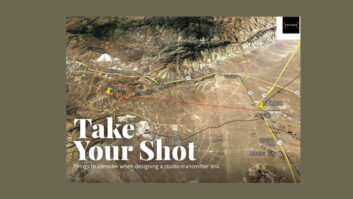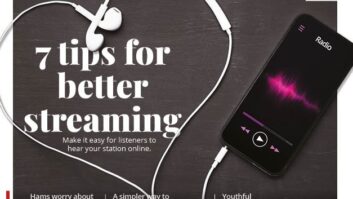This is the second in a series of articles in which representatives of Ibiquity Digital Corp. answer common questions about the implementation of in-band, on-channel digital audio broadcasting. Broadcast Technology Manager Jeff Detweiler answers today’s query.
Q:Do I need a digital studio-to-transmitter link for IBOC compatibility?
A: You do not need a digital STL to implement IBOC. However there are a number of factors you should consider before you decide one way or the other.
Present manufacturer plans call for AES-3 digital audio standard as the source for an IBOC exciter. The point at which you convert audio to an AES stream is dictated by the overall facility design.
In facilities that have separate studio and transmitter sites, some means must be provided to deliver the studio’s audio and data to the transmitter site. If audio processing will be located at the transmitter site, a common analog STL system may be employed because its output can be fed to the two independent audio processing chains (one for the IBOC digital system and one for the analog).
If processing is located at the studio, two independent audio streams must be sent to the transmitter site. This may require installing a new digital STL system.
As for throughput, IBOC FM is capable of reproducing the audio spectrum to 20 kHz. It would be desirable to have an STL capable of the same bandwidth. Do not dispose of the old FM STLs, however. They can be used in IBOC AM systems, which deliver FM-like quality with a 15 kHz response.
IBOC AM radio, like its FM counterpart, is a stereo-capable system and will dictate the use of a stereo program path. This can most readily be accomplished if a discrete channel analog or digital STL path was used at the FM station. You also can retrofit composite STL systems with digital encoding and decoding equipment to provide either AES/EBU or discrete audio channels.
STLs using bit-rate reduction must be carefully considered for compatibility. STL development has centered on reducing the bandwidth requirements of both RF- and telco-based digital STL systems. In the case of RF-based systems, this was to facilitate a digital path within the limited RF spectrum of the STL channel.
Bandwidth optimization has also been employed on telco-based systems to lower the cost of data lines. Stations that employ compressed STL channels should critically evaluate the potential for artifacts that may result from coding incompatibility.
If the STL uses coding, consider moving your processing to the transmitter site. Perceptual coding techniques rely upon dynamic models as they relate to audio metrics. If critical harmonic relationships are disturbed in the source audio fed to the coder, undesirable anomalies may occur in the decoded audio.
While not required, many stations may benefit from digital STL technology. A careful review of equipment location, throughput and potential for transcoding issues will guide your decision.
Send your IBOC questions for a reply in this space. E-mail to [email protected]. Radio World welcomes other points of view.












